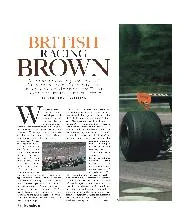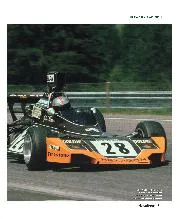On lap 19 he passed Jacky Ickx’s Lotus for eighth, and on lap 28 James Hunt’s sixth-placed Hesketh suffered a driveshaft failure, which promoted Watson to seventh. Four laps later Lauda’s Ferrari, which had been leading the race, was stopped by ignition failure. Watson was up to sixth: a points-paying position.
Better still, he now found that his old Brabham was handling beautifully, and that, now on tyres no less grippy than anyone else’s, he was able to close on and begin to look for a way past Emerson Fittipaldi’s fifth-placed McLaren. He harried Fittipaldi doggedly, drawing close often but never quite close enough to pass the wily Brazilian, who was defending his position cannily, until a couple of laps before the end, at which point Watson’s old BT42 began to run low on fuel. As a result he was not able to have a crack at the banzai bid for fifth place that he had been planning, but fortunately he was able to coast around to the flag and finish a fine sixth: both his and the team’s first ever F1 point. Only the two Ferraris of Lauda and Regazzoni, and the Lotus of Ronnie Peterson, who had won the race, had been circulating more rapidly that day, for the fourth-fastest lap of the race had been driven by Watson while he had been hunting down Fittipaldi. And let us not forget that he had been driving a one-year-old car.
He soldiered on with that ageing Brabham BT42 for four more grands prix – Anderstorp, Zandvoort, Dijon, and Brands Hatch – until Michaels bought him a new BT44 for Nürburgring. He qualified it 14th and retired it with suspension failure after a single lap. At Österreichring two weeks later he qualified 11th and finished an excellent fourth. At Monza the following month he qualified a superb fourth and finished seventh. At Mosport he qualified 15th and retired again, also with suspension failure, albeit this time after 60 laps. And at Watkins Glen he qualified seventh and finished a fighting fifth. But, even so, sadly, Michaels called time on Goldie Hexagon Racing after that.













